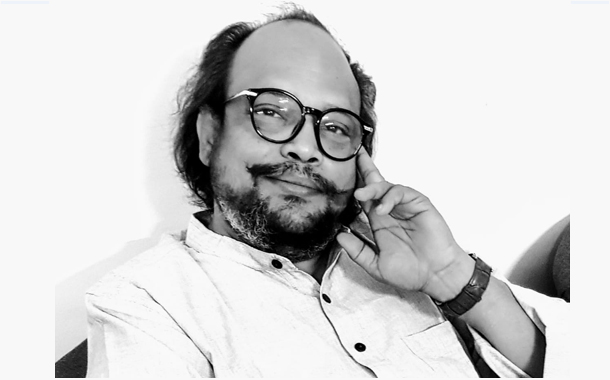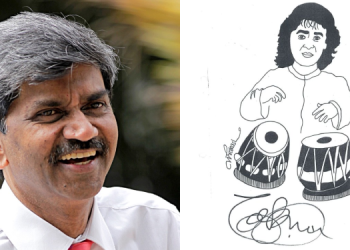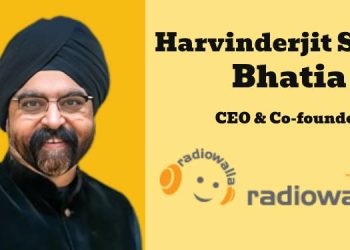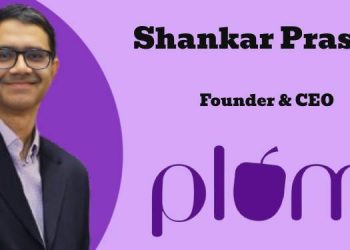Authored by Chandra Barathi
Digitization has finally become a reality. With the extended period to January 30, 2019, the tariff order will be implemented. It is expected to do justice to the consumers and the broadcasters alike. Now, the consumer can pay only for the channels that they want to view and the broadcasters will receive payment from the consumers, of course through the distributing DTH and MSO’s across the country.
The pay channels get their due, the DTH and MSO’s get their share, the consumer gets BST at a fixed rate and the Channels of choice at additional cost. Newer bouquets to meet the need of the consumer and enhance the pay revenue for the broadcaster are definitely attractions. Then, Is all fine with the new system ? Of course not.

The Regional Language Free To Air Channels who offer their content free to the consumers through the distributors, DTH and MSO’s are having a different kind of a problem arising out of the Reference Interconnect Agreement Offer. The Reference Interconnect Offer (RIO) uploaded by the DTH and MSO’s are as per the directions of TRAI. The RIO details the services to be offered by the Distributors and the Broadcasters. The RIO is the same for an FTA and a Pay Channel. In the part containing the definitions in RIO, “Territory/ Target Market “ is defined as the geographical territory of India and/ or the territory for which the MSO has been granted the license to operate.
India is a diverse country with diverse languages and culture. The census statistics of 2011 provides the following information on the Languages of India by number of native speakers :
| Languages of India by number of native speakers at the 2001 census[73] | |||
| Rank | Language | Speakers | Percentage (%) |
| 1 | Hindi[74] | 422,048,642 | 41.030 |
| 2 | Bengali | 83,369,769 | 8.110 |
| 3 | Telugu | 74,002,856 | 7.190 |
| 4 | Marathi | 71,936,894 | 6.990 |
| 5 | Tamil | 60,793,814 | 5.910 |
| 6 | Urdu | 51,536,111 | 5.010 |
| 7 | Gujarati | 46,091,617 | 4.480 |
| 8 | Kannada | 37,924,011 | 3.690 |
| 9 | Malayalam | 33,066,392 | 3.210 |
| 10 | Odia | 33,017,446 | 3.210 |
| 11 | Punjabi | 29,102,477 | 2.830 |
| 12 | Assamese | 13,168,484 | 1.280 |
| 13 | Maithili | 12,179,122 | 1.180 |
| 14 | Bhili/Bhilodi | 9,582,957 | 0.930 |
| 15 | Santali | 6,469,600 | 0.630 |
| 16 | Kashmiri | 5,527,698 | 0.540 |
| 17 | Nepali | 2,871,749 | 0.280 |
| 18 | Gondi | 2,713,790 | 0.260 |
| 19 | Sindhi | 2,535,485 | 0.250 |
| 20 | Konkani | 2,489,015 | 0.240 |
| 21 | Dogri | 2,282,589 | 0.220 |
| 22 | Khandeshi | 2,075,258 | 0.200 |
| 23 | Kurukh | 1,751,489 | 0.170 |
| 24 | Tulu | 1,722,768 | 0.170 |
| 25 | Meitei (Manipuri) | 1,466,705 | 0.140 |
| 26 | Bodo | 1,350,478 | 0.130 |
| 27 | Khasi – Garo | 1,128,575 | 0.112 |
| 28 | Mundari | 1,061,352 | 0.105 |
| 29 | Ho | 1,042,724 | 0.103 |
Thus you shall find that only Hindi speaking citizens are over 41% and all other schedule language speaking persons are below 10%. India being a Union of States with diverse languages, there are many Satellite TV Channels in the major regional languages in almost all the genres. There are over 872 channels broadcast in India and out of which 184 are pay channels. Many of the Regional Language Channels are Free To Air (FTA) channels. There is a proliferation of Satellite FTA TV channels in Southern India. Please find below in the following table with the details of FTA Channels from Southern India.
| Language | No of Channels |
| Kannada | 33 |
| Malayalam | 37 |
| Telugu | 49 |
| Tamil | 67 |
It has been reported that the DTH has penetrated 69.7 Million households in India and the share of market is as under: * data from market sources and various publications
| All India | TN | ||
| Total No of HHls | Mn. | 297.62 | 17.38 |
| Total DTH Connectivity | 69.7 | ||
| DIstributor | % Share | All India in Mn | TN in Mn |
| Airtel | 21% | 14.637 | 1.35 |
| Dish+Videocon | 42% | 29.274 | 1.39 |
| Tatasky | 25% | 17.425 | 1.75 |
| Sun DTH | 11% | 7.667 | 1.95 |
| Reliance | 1% | 0.697 | 0.30 |
| 69.70 | 6.74 | ||
It is expected that over a period of time DTH subscription base could increase with the advent of technology and improved the user experience. Now, what is the problem with RIO for Regional Language FTA?
RIO describes how the carriage fee will be computed. The example given is as below:
Suppose a distributor of television channels has an agreement with a broadcaster for carriage of a standard definition channel called ‘X’ at the rate of Rs. 0.20 per subscriber per month. The carriage fee amount payable by the broadcaster to the distributor would be calculated as follows:-
ILLUSTRATION
| Month | Average Active Subscriber Base over the month | Monthly subscription percentage of the standard definition Channel ‘X’ | Rate of Carriage Fee (in Paisa) | Multiplier | Carriage Fee Amount in (Rs.) |
| (A) | (B) | (C) | (D) | (E) | (F)=(B)x(D)x(E) |
| January | 1000 | 4% | 20 | 1 | 200.00 |
| February | 800 | 8% | 20 | 0.75 | 120.00 |
| March | 1500 | 12% | 20 | 0.50 | 150.00 |
| April | 2000 | 19% | 20 | 0.25 | 100.00 |
| May | 3000 | 20% | 20 | 0 | 0.00 |
| June | 4000 | 22% | 20 | 0 | 0.00 |
| July | 10000 | 17% | 20 | 0.25 | 500.00 |
| August | 20000 | 25% | 20 | 0 | 0.00 |
In the BST, all DD FTA channels and channels who have entered into carriage fee by the DTH/ MSO will be carried. There will be 100 Channels of these at a cost of Rs. 130/- per month per subscriber. The Pay Channels will then be added by the consumer as per their choice or from the bouquet offered by the broadcasters. However, the FTA Channels, mostly the Regional Language Channels will not necessarily be made available in the BST. The distributor will be creating various bouquets for the regional language in which FTA will be placed. Doesn’t it look reasonable and logically sound? Yes it is. Then where is the catch. The catch is in the computation. How?
Please look at the earlier Table showing the demographics of the languages in India. As per the computation formula, only if the broadcaster is above 25% of the average subscriber base of the distributor, there shall be no carriage fee. When a Regional Language Satellite TV channel is placed with the Distributor having a license to operate in the “ Territory/ Target Market” across geographical territory of India, they shall never reach 25% of the subscription base of the distributor. The distributor shall then compute the carriage fee in slabs as per their National Average subscription base which will be many times over the actual subscription base for the given Regional Language.
| All India | Tamil Nadu | |||||||
| Total No of HHls | Mn. | 297.62 | 17.38 | |||||
| Total DTH Connectivity | 69.7 | |||||||
| Distributor | % Share | All India in Mn | TN in Mn | As % of All India Base | Rate | Factor | Amount in Mn INR | Annual in Mn INR |
| Airtel | 21% | 14.637 | 1.35 | 9.2% | 0.2 | 0.75 | 2.20 | 26.35 |
| Dish+Videocon | 42% | 29.274 | 1.39 | 4.7% | 0.2 | 1 | 5.85 | 70.26 |
| Tatasky | 25% | 17.425 | 1.75 | 10.0% | 0.2 | 0.75 | 2.61 | 31.37 |
| Sun DTH | 11% | 7.667 | 1.95 | 25.4% | 0.2 | 0 | 0.00 | 0.00 |
| Reliance | 1% | 0.697 | 0.30 | 43.0% | 0.2 | 0 | 0.00 | 0.00 |
| 69.70 | 6.74 | 10.66 | 127.97 | |||||
| 100% | 9.6% |
It will be evident from the above table that an FTA channel of Tamil Language has to pay a carriage fee based on the All India Subscription Base of the DTH operator which will be 10 times higher than the subscriber base for the given Language. Doesn’t it sound preposterous?
The above scheme with the definition of “Territory/ Target Market” being defined as a geographical territory of India will do more damage to the economic viability of Regional Language Channels. Even for the pay channels who will have to do an adjustment/ discount for the carriage fee, it may not be economical. Alternatively, the DTH operators are doing LCN deals with the broadcasters and those costs are not standardized and bereft of any reasoning. Neither the choice of the Channels for carriage is done on the basis of popularity and is proportional to the perceived depth of pocket of the promoters.
The FTA channels thrive only through advertising revenue bearing all the costs of production of content. In fact, FTA channels provide the content free to the distributor to enable the provision of signals to the consumers. The DTH operators have got the license from Union of India and are operating with the spectrum of frequency, the public property of India. Denying opportunity to an FTA TV channel is denying equal opportunity to do business in India by an Indian.
The argument is not for waiver of carriage fee. It is understood that there are costs involved in distribution and the same need to be reimbursed by the broadcasters. In lieu of carriage of the channel bearing the cost of carriage, the content that is free also have to be given a weightage. With the condition that there will be genre grouping the distributors may charge in proportion to the subscriber base at the basic rate and perhaps negotiate for specific desired LCN. Otherwise the above computation based on the National Average sub base will be illogical and against natural justice. Along with the laudable effort of MIB and TRAI in bringing in fair pricing and choice of channels to the consumers, efforts to regulate the carriage fee for FTA channels have to be taken. There has to be parity in costs and fairness in treatment towards FTA by the distributors. Hope that the Powers that be are listening…
The Author is a Senior Media Professional
Disclaimer: Author’s view reflected in this content, TVNews4U doesn’t have any say on it.

















